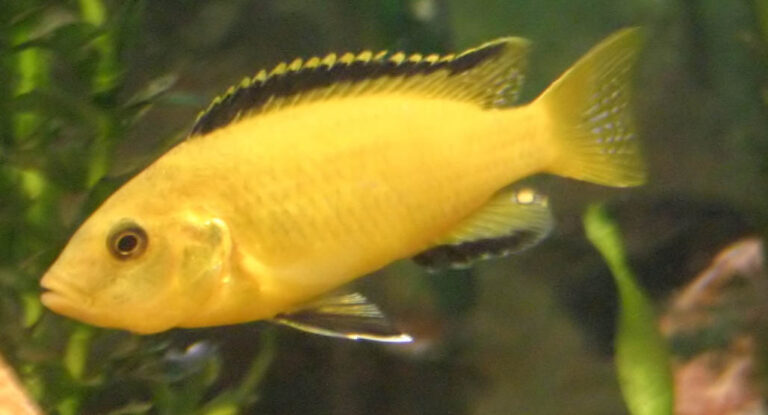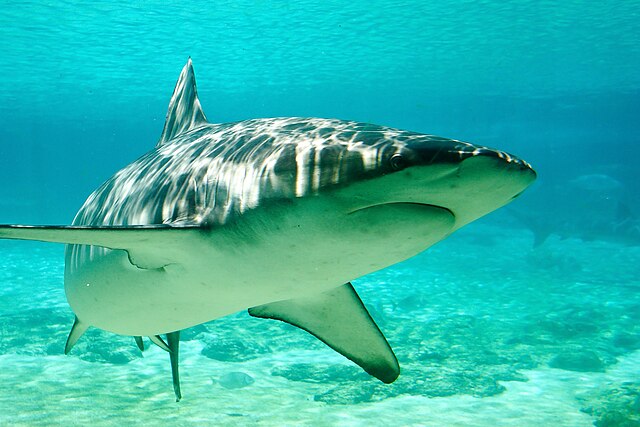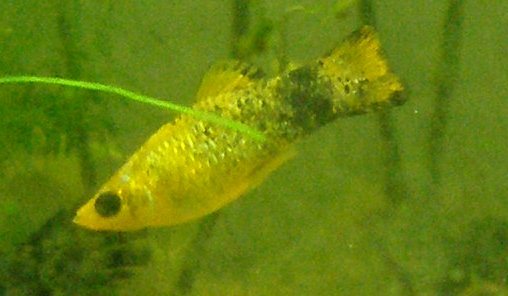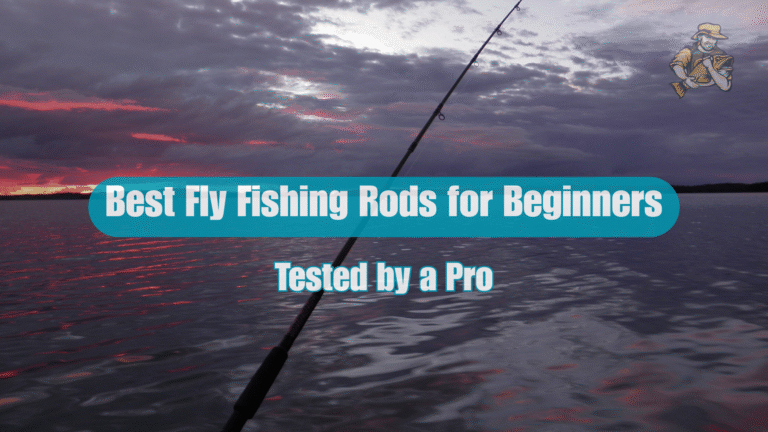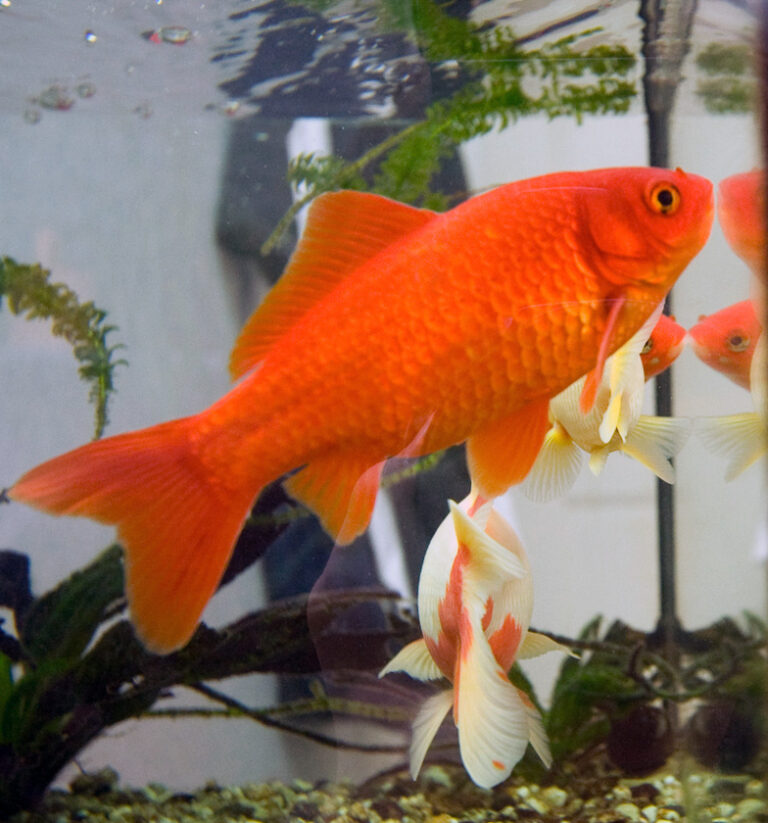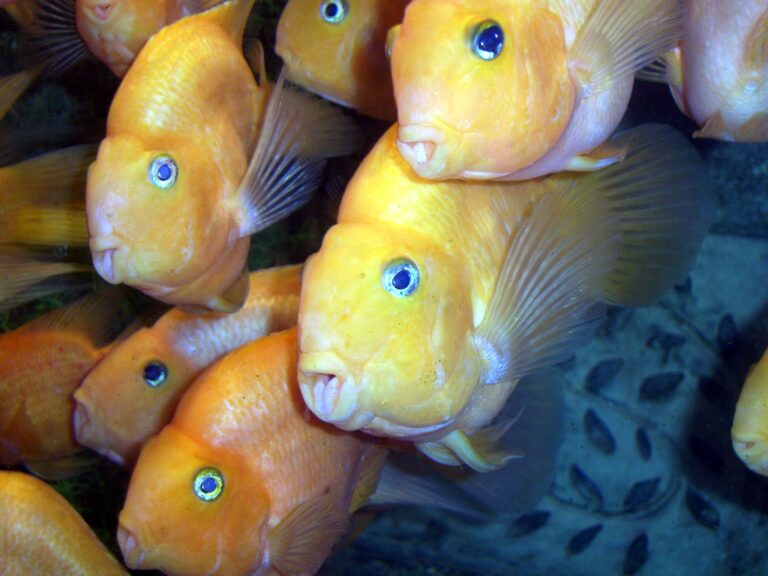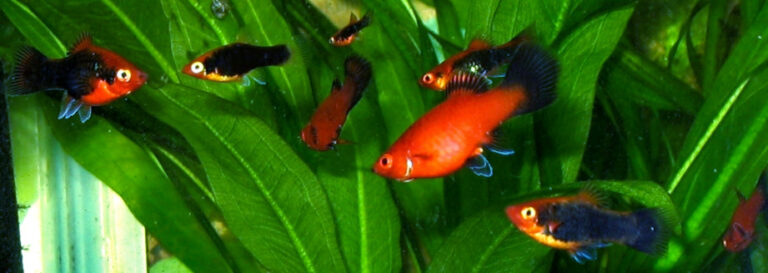How to Become a Better Fisherman in 2025: Master These 5 Skills
By Adam Hawthorne | Last Modified: April 27, 2025
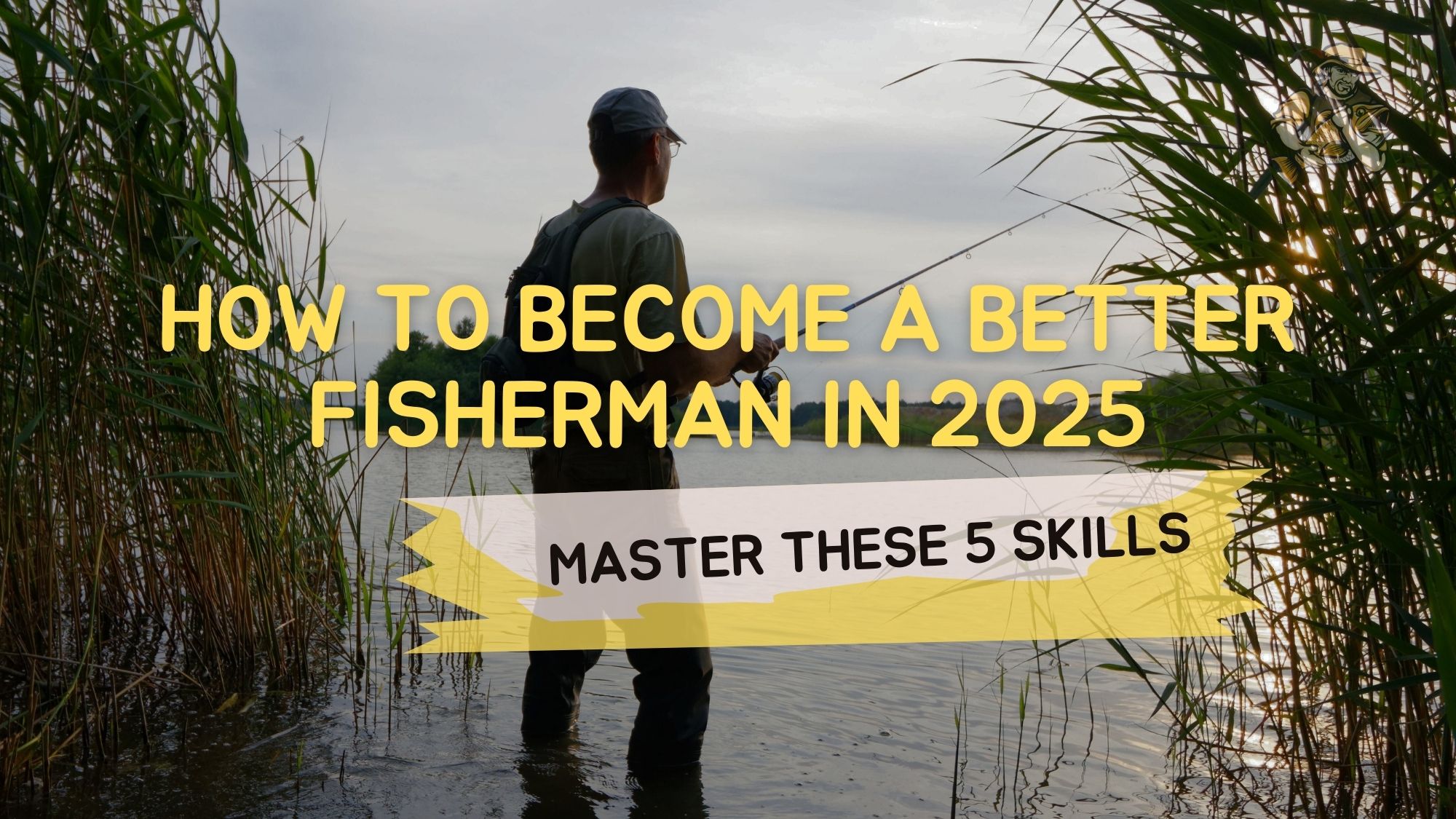
There’s something magical about that moment when your line goes tight and you feel the unmistakable pull of a fish on the other end. Whether you’re new to fishing or have been casting lines for years, there’s always room to grow as an angler. I’ve been fishing the waters of Michigan and beyond for over three decades, and I’m still learning new tricks every season.
Becoming a better fisherman in 2025 isn’t about buying the most expensive gear or memorizing complicated techniques. It’s about mastering a core set of skills that will serve you well on any body of water, in any conditions. From my experience guiding beginners on their first fishing trips to competing in local tournaments, I’ve identified five fundamental skills that can transform your fishing success this year.
Mastering Water Reading Skills for Better Fishing Results
One of the most valuable skills you can develop as an angler is learning to “read” the water. This isn’t some mystical ability – it’s about understanding how water behaves and how fish relate to different underwater structures and conditions.
When I first started fishing Lake Michigan, I spent more time watching the water than actually casting. That observation time paid off dramatically. I learned to spot subtle current seams, identify underwater structure by surface clues, and recognize the signs of feeding activity.
Water reading starts with understanding that fish aren’t randomly distributed throughout a body of water. They congregate in specific areas based on:
- Available food sources
- Water temperature and oxygen levels
- Cover from predators
- Current flow patterns
- Bottom composition
Last summer, I was fishing a small stretch of the Au Sable River that I’d passed by dozens of times before. Normally, I would have kept walking to my “favorite spot,” but the light was hitting the water just right, and I noticed a subtle current break behind a partially submerged log. That observation led to catching one of my largest brown trout of the season.
The folks at Wired2Fish have a fantastic article about identifying productive fishing spots based on water reading that completely changed my approach to finding fish. They emphasize looking for transitions – places where shallow water meets deep, where current speeds change, or where bottom composition shifts.
To improve your water reading abilities:
- Spend time observing before fishing
- Watch for surface disturbances that indicate structure below
- Notice where birds are feeding (often indicates baitfish presence)
- Look for color changes in the water
- Pay attention to how the current moves around obstacles
Water temperature is another critical factor. I keep a small thermometer in my tackle bag and check temperatures throughout the day, especially in spring and fall. Bass fishing in Michigan taught me that even a 2-3 degree temperature difference can concentrate fish in specific areas.
Sometimes I bring my son Tommy along, and we make a game of “spot the structure” before we even cast a line. He’s getting pretty good at pointing out likely fishing spots – kids often notice details we adults overlook.
Perfecting Your Casting Technique for All Situations
I used to think casting was simple – just throw the bait where you want it to go, right? After years of watching truly skilled anglers, I realized proper casting technique can make or break your fishing success.
Good casting isn’t just about distance – it’s about accuracy, presentation, and adaptability to different conditions. When fishing the rocky shorelines of Lake Superior, I often need to make precise casts into tight pockets between boulders. Other situations call for delicate presentations that don’t spook wary fish.
The biggest casting mistake I see beginners make is using their entire arm to cast. Effective casting comes primarily from the wrist and forearm, with the rod acting as an extension of your arm. This gives you much better control and reduces fatigue over a long day of fishing.
To improve your casting:
- Practice in your backyard before hitting the water
- Work on accuracy by setting up targets at various distances
- Learn to cast with both dominant and non-dominant hands
- Master different casting styles for various situations
- Focus on smooth acceleration and proper stopping points
One technique that dramatically improved my fishing success was learning to skip baits under docks and overhanging vegetation. This opened up areas that most anglers never reach. It took lots of practice (and some embarrassing backlashes), but the ability to get my lure into places other anglers can’t has been worth every frustrating practice session.
My fishing buddy Mark is a wizard with a baitcaster and taught me a simple drill: set up a hula hoop at 20 feet, and try to land your lure inside it 8 out of 10 casts. Once you can do that consistently, move it to 30 feet, then try placing it under simulated cover.
Different fishing scenarios require different casting styles:
- Overhead casts for distance in open water
- Sidearm casts for fishing under trees or docks
- Pitch casts for precise short-distance presentations
- Flip casts for quiet entry when fish are spooky
I was struggling with backlashes on my baitcasting setup until I found a helpful tutorial on Karl’s Bait & Tackle that walked through proper thumb control and reel adjustments. Their systematic approach helped me eliminate most of my backlashes within a single fishing session.
A quality casting session requires focus – something I learned the hard way when talking to Tommy while casting and ending up with my crankbait stuck in a tree branch. Finn had a good laugh at that one (well, if dogs could laugh).
Learning to Match the Hatch for Consistent Success
“Matching the hatch” is a term borrowed from fly fishing, but the concept applies to all fishing styles. Simply put, it means offering fish bait that closely resembles what they’re naturally feeding on.
This seems obvious, but I can’t tell you how many times I’ve watched anglers throw the same lure all day without success, never adjusting to what the fish actually want. Fish can be incredibly selective, especially in heavily fished waters.
When I first started fishing the Great Lakes, I brought my tackle box full of lures that had worked great in the small ponds back home. I couldn’t understand why the fish weren’t biting until an old-timer at the dock showed me the small shad the local bass were actually feeding on. My lures were 3-4 times too large!
To effectively match the hatch:
- Take time to observe the natural prey in your fishing area
- Look for jumping baitfish or bugs on the water’s surface
- Check the stomach contents of keeper fish (when legal and ethical)
- Adjust your lure size, color, and action to mimic available food
- Be willing to change tactics when conditions change
Last spring during a mayfly hatch on the Au Sable, I watched frustrated anglers throwing all kinds of expensive lures without success. Meanwhile, a young girl with a simple rod and a small brown fly was catching fish after fish. That was a humbling reminder that presentation and matching natural food sources trumps fancy equipment every time.
The Bass Resource community has several excellent discussions about regional forage bases and how to select lures that match local prey species. Their members provide location-specific advice that can save you hours of trial and error.
I keep a small notebook in my tackle box where I record successful lure and bait combinations for different waters and seasons. This personal “hatch chart” has become invaluable over the years. Not just because my memory isn’t what it used to be, but because patterns emerge when you track your success over time.
Sometimes matching the hatch means going against conventional wisdom. During one late summer evening on Lake Huron, the typical silver spoons weren’t producing any bites. I noticed small purple insects swarming near the surface and switched to a small purple swimbait – suddenly the fish couldn’t resist. That purple swimbait has been in my tackle box ever since, even though it doesn’t look like anything naturally occurring to my eyes.
When fishing with artificial lures, keep these matching principles in mind:
- Size (usually most important)
- Color (especially in clear water)
- Profile (shape and silhouette)
- Action (how it moves through the water)
- Sound (many modern lures include rattles)
I’ve learned that when fish are actively feeding, they’ll hit almost anything that resembles their prey. But during tough conditions or high pressure, exact matching becomes critical to success.
Developing Advanced Fish-Finding Technology Skills
Technology has revolutionized fishing over the past decade, and 2025 brings even more powerful tools to help locate fish. While some purists resist these advances, I believe learning to effectively use fish-finding technology is now a fundamental skill for the modern angler.
I remember my first fish finder – a simple grayscale unit that mostly showed me the bottom depth and little else. Today’s units combine sonar, GPS, mapping, and even underwater cameras to create detailed pictures of the underwater world. Learning to interpret this information can dramatically increase your success rate.
When I first upgraded to a modern fish finder with side-imaging sonar, I was overwhelmed by all the information. It took time to learn what all those blips and shadows meant. But once I did, it was like having underwater glasses. I could spot submerged trees, rock piles, and schools of baitfish that were completely invisible from the surface.
To improve your tech skills:
- Study your fish finder’s manual thoroughly
- Watch tutorial videos specific to your brand and model
- Practice interpreting sonar returns in familiar waters
- Create and save waypoints for productive spots
- Learn to use mapping features to identify likely fish-holding structures
Tackle Warehouse has excellent resources on setting up and interpreting modern fish finders. Their guides helped me understand the differences between arch marks representing individual fish and dense returns indicating schools of baitfish.
My fishing buddy Mike is a tech wizard who taught me to adjust sensitivity settings based on water clarity and depth. In the clear waters of Lake Michigan, we run lower sensitivity to reduce clutter, while in the stained waters of inland lakes, higher sensitivity helps reveal structure that would otherwise be missed.
During a fishing trip last fall, I spotted what looked like a small bump on an otherwise flat section of lake bottom using my side-imaging. That “bump” turned out to be a submerged rock pile holding a school of walleye. Without the technology to spot it, I would have cruised right past one of the most productive spots of the day.
Beyond fish finders, other technologies worth mastering include:
- Fishing-specific weather apps that predict barometric pressure changes
- Underwater cameras for examining structure and fish behavior
- GPS systems for precise return to productive spots
- Digital mapping services that reveal underwater contours
Even with all this technology, remember that these are tools, not magic fish catchers. They help you locate fish, but you still need to present your bait properly and entice them to bite.
I sometimes leave all the electronics off when taking Tommy fishing. There’s something to be said for developing those instinctual fish-finding skills without technology. But when I’m serious about finding fish in unfamiliar waters or during tough conditions, technology gives me a significant edge.
Mastering Seasonal Pattern Recognition for Year-Round Success
Fish behavior changes dramatically throughout the year. Understanding these seasonal patterns and how they affect fish location and feeding habits might be the single most important skill for consistent success.
When I first started fishing seriously, I couldn’t understand why spots that produced great catches in summer were completely dead in early spring. Through years of observation and some mentoring from more experienced anglers, I began to recognize the predictable patterns fish follow as water temperatures and forage availability change with the seasons.
In Michigan, our distinct seasons create dramatic shifts in fish behavior:
- Spring: Pre-spawn movement to shallow waters, often aggressive feeding
- Summer: Movement to temperature-appropriate depths, more predictable patterns
- Fall: Increased feeding activity preparing for winter, following baitfish migrations
- Winter: Reduced metabolism, concentration in specific areas with stable conditions
Understanding these patterns helps me start each fishing trip with a high-probability strategy rather than randomly searching for fish. For example, knowing that walleye move to rocky points adjacent to deep water in late fall has saved me countless hours of fruitless searching.
The team at In-Fisherman has an excellent seasonal guide to freshwater fish movements that clarified many pattern questions I had when getting started. Their system of dividing each season into early, middle, and late periods provides a more nuanced understanding of fish behavior.
I keep detailed notes about successful fishing locations and conditions throughout the year. After several years, clear patterns emerged that now guide my fishing plans. For instance, I know that a certain rocky point on Lake Huron produces consistently in early morning during summer, but is virtually dead during midday – yet becomes productive again in fall evenings.
Seasonal knowledge also helps with lure selection:
- Spring often calls for slower presentations as fish are still somewhat lethargic
- Summer might require faster retrieves or deeper presentations
- Fall can be prime time for reaction baits as fish feed aggressively
- Winter typically requires the slowest, most subtle presentations
Temperature triggers are key to predicting seasonal movements. I’ve found that bass in my local lakes begin their spring shallow movement when water temperatures consistently reach 55°F. Knowing this number gives me a head start over anglers who go strictly by calendar dates.
Barometric pressure also plays a huge role in fish activity levels. I’ve noticed patterns where falling pressure before storms often triggers feeding frenzies, while high, stable pressure can make for tough fishing conditions. The FishWeather app has been invaluable for tracking these pressure changes and planning trips accordingly.
One mistake I made for years was fishing memories – returning to spots where I’d caught fish previously without considering how seasonal patterns had changed. Now I ask myself, “Where would fish be right now based on the season, temperature, and available food?” rather than “Where did I catch them last time?”
Developing Sustainable Fishing Practices
While not traditionally considered a “fishing skill,” I believe developing sustainable fishing practices is essential for any angler serious about the future of our sport and our fisheries. This is becoming increasingly important in 2025 as we face continued pressure on fish populations.
When I first started fishing, I didn’t give much thought to conservation. I just wanted to catch fish. But after witnessing declining fish populations in some of my favorite waters, I realized that we all have a responsibility to protect the resources we enjoy.
One transformative experience happened while fishing with an older guide on Lake Superior. He carefully released a beautiful lake trout, explaining that while it was legal to keep, this was likely a fish that would spawn in the fall and contribute thousands of eggs to the next generation. That simple act and explanation changed my perspective on selective harvest.
Key sustainable fishing practices include:
- Proper catch and release techniques to ensure fish survival
- Selective harvest – keeping only what you’ll eat and releasing larger breeding fish
- Using barbless hooks when practicing catch and release
- Proper handling techniques to minimize stress and injury to fish
- Awareness of regulations and restrictions
The Michigan DNR website provides excellent guidance on fish handling and release techniques specific to our local species. Their recommendations have helped me significantly reduce mortality rates for the fish I release.
I’ve made changes to my equipment and techniques to support conservation:
- Switching to barbless hooks for easier, less damaging releases
- Carrying long-nose pliers and fish grippers for safe handling
- Using rubber or coated nets that minimize damage to fish scales and slime coating
- Keeping fish in the water during the release process whenever possible
- Taking photos quickly to minimize air exposure
Last year, I participated in a voluntary tagged fish program on Lake Michigan where anglers report data on tagged fish they catch before releasing them. This citizen science helps biologists track fish movements and growth rates. The Salt Strong blog has a great post about similar programs nationwide and how anglers can contribute to fisheries research.
I’ve also become more conscious about trash and fishing line around waterways. My fishing vest now has a dedicated pocket for collecting discarded line and hooks I find, and Tommy has turned this into a game, competing with me to see who can collect more trash during our fishing trips.
Teaching sustainability to the next generation is perhaps most important of all. When Emma caught her first keeper bass last summer, we had a conversation about whether to keep it or release it. We decided together to take a quick picture and release it, talking about how that fish would grow bigger and potentially provide more enjoyment to another angler in the future.
Frequently Asked Questions About Becoming a Better Fisherman
What’s the single most important skill for fishing success?
While all the skills mentioned are important, I’d say water reading is the foundation everything else builds upon. If you can’t find the fish, the best casting technique and perfect lure selection won’t help. I spent an entire summer focusing just on identifying structure and understanding how fish relate to it, and my catch rates doubled that year. Learning to spot subtle current breaks, recognize depth changes from surface clues, and understand how fish position themselves has been invaluable across all fishing environments.
Do I need expensive gear to become a better angler?
Absolutely not! Some of my best fishing days have come with minimal, budget-friendly equipment. Focus on quality in the items that matter most – like a sensitive rod and reliable reel – but don’t fall into the trap of thinking expensive gear equals more fish. My “$12 Rod Challenge” proved this when I caught a 5-pound bass on a yard sale rod while my expensive setups sat unused. As the folks at Mystery Tackle Box point out in their beginner gear guide, reliability and comfort are far more important than price tag when you’re starting out.
How long does it take to become proficient at fishing?
Fishing proficiency develops over time with consistent practice, but you can make significant improvements in just one season by focusing on these core skills. I’ve seen complete beginners become competent anglers within 10-15 outings when they approached learning systematically rather than randomly. The Bass Resource forum has a great thread about skill progression where experienced anglers share their learning timelines – most agree that focused practice accelerates improvement dramatically.
Should I specialize in one type of fishing or learn multiple techniques?
This depends on your goals. I started by mastering basic bass fishing before branching out to other species and techniques. This focused approach helped me build confidence and understand fundamental principles. Once I had those basics down, learning new techniques became much easier. That said, experiencing different types of fishing broadens your understanding of fish behavior and water dynamics. The anglers I know who catch fish most consistently tend to be versatile and can adapt to different conditions.
How important is fishing with more experienced anglers?
Finding a mentor or fishing with more experienced anglers can accelerate your learning curve tremendously. I learned more about reading water in one day fishing with an experienced guide than I had in months of trial and error on my own. If you don’t have access to experienced fishing partners, online fishing communities like The Hull Truth provide forums where you can ask questions and learn from others’ experiences. Local fishing clubs are another great resource for connecting with knowledgeable anglers willing to share their expertise.
What should I focus on first as a beginning angler?
For beginners, I recommend mastering these fundamentals before worrying about advanced techniques:
- Basic knot tying (improved clinch knot and Palomar knot)
- Fundamental casting accuracy within 30 feet
- Understanding how to safely handle fish
- Learning to identify the most common fish species in your area
- How to read basic water features (drop-offs, structure, current)
Florida Sportsman has a comprehensive beginner’s guide that breaks down these fundamentals in an approachable way. Their step-by-step approach is similar to how I taught Tommy when he started fishing.
How do weather conditions affect fishing success?
Weather plays a huge role in fishing success – something I learned through many frustrating trips before understanding the patterns. Barometric pressure changes, front passages, wind direction, and cloud cover all influence fish behavior. Generally, fishing tends to be better:
- When pressure is falling before a storm
- During light rain (especially summer)
- On cloudy, moderately warm days
- With a light ripple on the water surface
Karl’s Bait & Tackle published a helpful weather impact guide that explains how these factors affect different fish species. Understanding these patterns has helped me plan more productive trips and adjust tactics when conditions change during a fishing day.
Final Thoughts on Becoming a Better Fisherman
Becoming a better fisherman isn’t about mastering some secret technique or buying the latest gear. It’s about developing a set of fundamental skills and constantly refining them through experience. The five skills we’ve covered – water reading, casting technique, matching the hatch, using technology, and understanding seasonal patterns – provide a solid foundation for fishing success in any environment.
Throughout my 30+ years of fishing, I’ve found that improvement comes from both successes and failures. Some of my most productive lessons came after the most frustrating days on the water. That’s when I forced myself to analyze what went wrong and make adjustments.
Patience is essential in this process. Fishing skills develop gradually, through consistent practice and mindful observation. Take time to really observe and think about what’s happening underwater, rather than just mechanically casting and retrieving. The more you understand why fish behave the way they do, the better you’ll become at predicting and capitalizing on that behavior.
Remember that every body of water is unique, with its own personality and patterns. The specific applications of these skills will vary depending on where you fish, but the fundamental principles remain consistent. Whether you’re chasing bass in your local pond or stalking trout in a mountain stream, these skills will serve you well.
Most importantly, maintain your passion and curiosity. The best anglers I know are perpetual students of the sport, always open to learning something new. Even after decades on the water, I’m still discovering new techniques, observing new patterns, and occasionally being humbled by fish that refuse to follow the rules.
Here’s to your fishing success in 2025 and beyond. May your lines stay tight and your nets stay full!

Meet Adam Hawthorne
I’m a lifelong fishing enthusiast who’s spent years exploring rivers, lakes, and oceans with a rod in hand. At Fishing Titan, I share hands-on tips, honest gear reviews, and everything I’ve learned about fish and ocean life, so you can fish smarter and enjoy every cast.
Share:

Meet Adam Hawthorne
I’m a lifelong fishing enthusiast who’s spent years exploring rivers, lakes, and oceans with a rod in hand. At Fishing Titan, I share hands-on tips, honest gear reviews, and everything I’ve learned about fish and ocean life, so you can fish smarter and enjoy every cast.
Related Articles
-
Yellow Lab Cichlid
The Yellow Lab Cichlid (*Labidochromis caeruleus*) stands as one of Africa’s most recognizable freshwater fish species, distinguished by its vibrant golden-yellow coloration and peaceful temperament…
-
Dusky Shark
The Dusky Shark represents one of the most ecologically significant yet vulnerable large predators inhabiting coastal and pelagic waters worldwide. Known scientifically as *Carcharhinus obscurus*,…
-
Balloon Molly
The Balloon Molly (*Poecilia latipinna* var.) represents one of the most distinctive and popular ornamental fish varieties in the freshwater aquarium trade. This selectively bred…
-
7 Best Fly Fishing Rods for Beginners in 2025 (Tested by a Pro)
Ask any fly angler what their most important piece of gear is, and most will point to their rod. But here’s the thing – when…
Fish Species
-
Telescope Goldfish
The Telescope Goldfish (Carassius auratus) represents one of the most distinctive and recognizable varieties of fancy goldfish in the aquarium trade. Distinguished by its characteristic…
-
Blood Parrot Cichlid
The Blood Parrot Cichlid stands as one of the most distinctive and controversial specimens in contemporary aquarium culture. This hybrid fish, scientifically known as *Amphilophus…
-
Molly Fish
The Molly Fish represents one of the most adaptable and ecologically significant freshwater species in tropical and subtropical regions worldwide. Known scientifically as *Poecilia sphenops*…
-
Tuxedo Platy
The Tuxedo Platy (Xiphophorus maculatus) stands as one of the most recognizable and beloved freshwater aquarium fish species, distinguished by its striking black and white…

